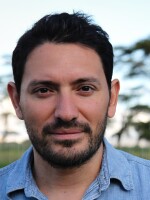The qualifier "ever" always makes us journalists nervous. So when we started to hear that Hurricane Patricia had become the "strongest hurricane ever," we started digging.
So is it? It could very well be, but we have no definitive answer.
As Phil Klotzbach, a research scientist who helps put out closely watched hurricane predictions at Colorado State University, tells us, you'll get a different answer depending on the database you look at.
We looked at the database kept by the World Meteorological Organization and by that measure, Patricia is the strongest hurricane ever measured in terms of sustained windspeed. It is in the top five in terms of pressure.
But if you look at the chart below, you'll notice that Super Typhoon Haiyan is not on the list. By some measures, said Klotzbach, Haiyan had sustained winds of 195 mph, or about 5 mph lower than Patricia's current strength.
But there are two issues here: That estimate was made by the U.S. Joint Typhoon Warning Center. The Japanese Meteorological Agency, the WMO-sanctioned organization for the West Pacific, estimated the winds at 144 mph.
The issue there is that Haiyan's winds were being estimated using satellite images. The Japanese and the Americans measure those things differently. And there's one other complicating factor: The Japanese look at sustained winds in one-minute increments. The U.S. makes those measurements in 10-minute increments.
"The one- to 10-minute conversion is tricky," said Klotzbach. So a plane could have found that Haiyan's winds were stronger or weaker than the winds estimated by the Americans or the Japanese.
To make things easier, Klotzbach looked at just U.S. data, and he came to the conclusion that this is the strongest hurricane since the 1970s, when wind measurements are reliable.
Either way, what the table below makes clear is that by any measure, Hurricane Patricia is a monster.
Copyright 2021 NPR. To see more, visit https://www.npr.org.





